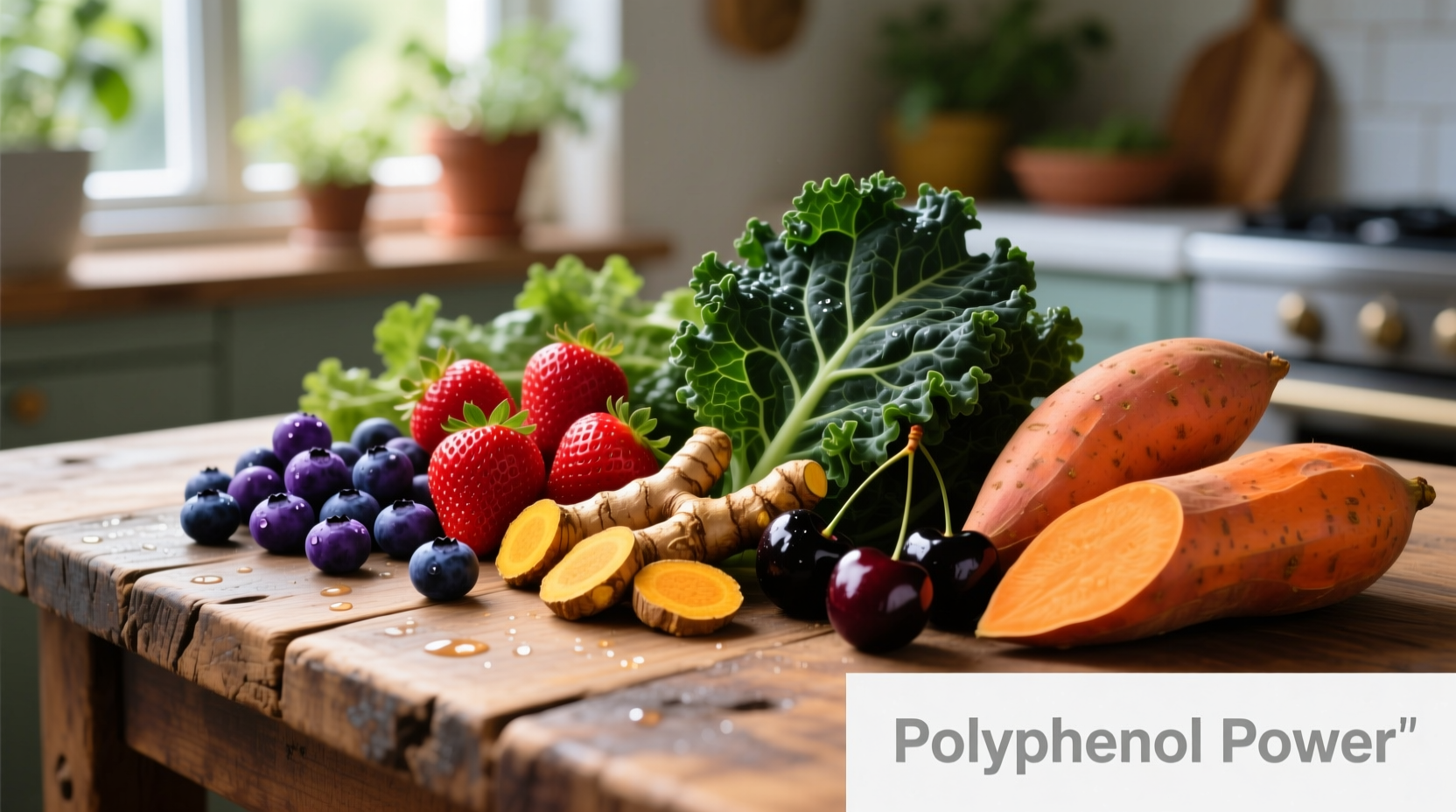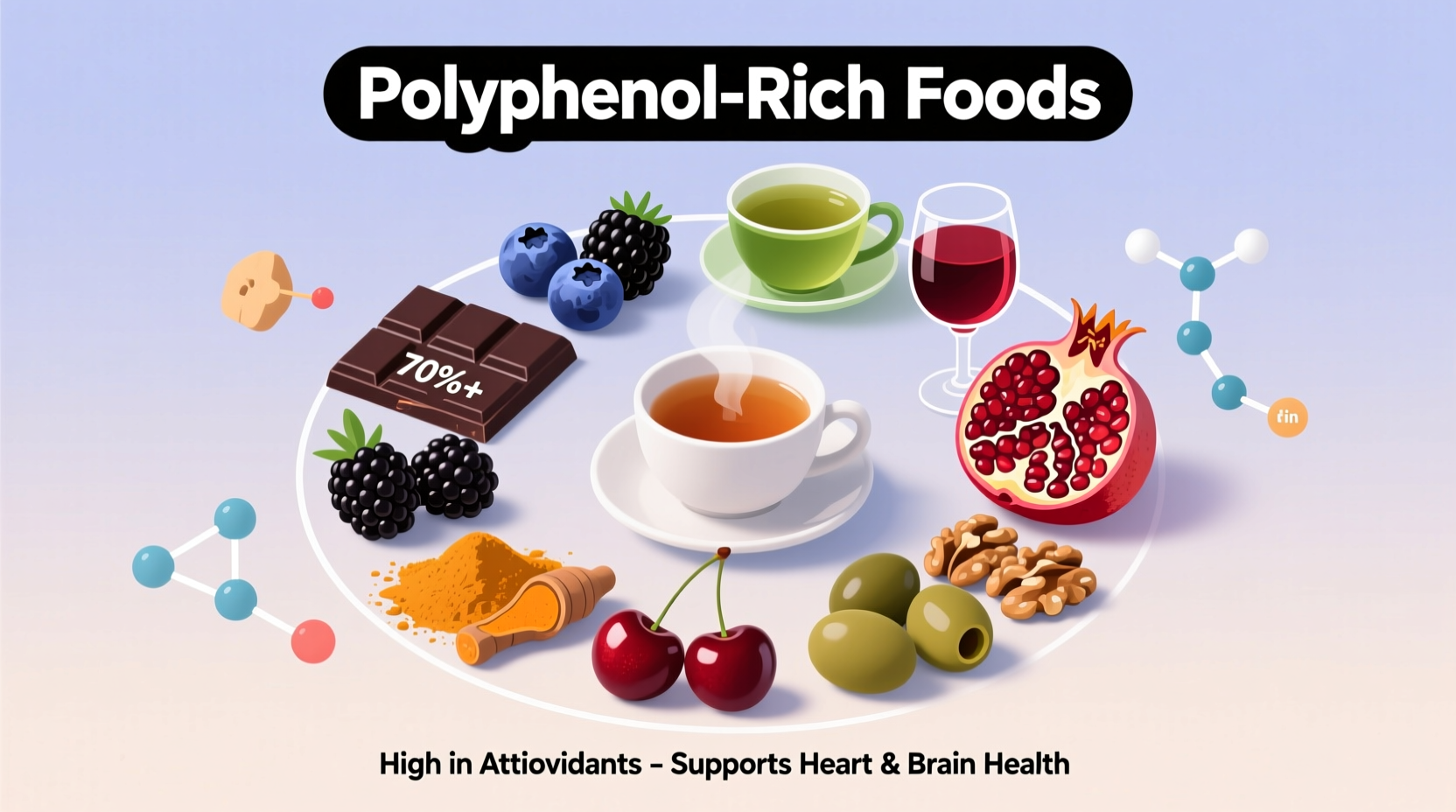As a culinary scientist who's studied plant compounds for over 15 years, I've witnessed how understanding polyphenol sources transforms dietary choices. These natural compounds—found abundantly in certain fruits, vegetables, and beverages—represent one of nature's most potent defense systems against cellular damage. In this guide, you'll discover precisely which foods deliver maximum polyphenol benefits, how preparation methods affect their potency, and practical strategies to incorporate them into your daily routine.
Why Polyphenol-Rich Foods Matter for Your Health
Polyphenols function as nature's antioxidant defense system within plants, and when we consume them, they provide similar protective benefits for our bodies. Research published in the Journal of Agricultural and Food Chemistry confirms these compounds neutralize free radicals, reduce inflammation markers, and improve endothelial function. Unlike synthetic supplements, food-based polyphenols work synergistically with other nutrients to enhance bioavailability—a phenomenon scientists call the "food matrix effect."
Top 10 Polyphenol Powerhouses: Scientifically Ranked
Based on the USDA's comprehensive database and recent European nutritional studies, these foods consistently demonstrate the highest polyphenol concentrations. Note that growing conditions, ripeness, and processing significantly impact actual levels.
| Food Source | Polyphenol Content (mg per 100g) | Primary Polyphenol Types | Optimal Preparation Method |
|---|---|---|---|
| Cocoa powder (unsweetened) | 2,650 | Flavanols, procyanidins | Raw or minimally processed |
| Dark chocolate (70-85% cocoa) | 1,660 | Epicatechin, catechin | Consume within 2 hours of production |
| Blueberries (wild) | 560 | Anthocyanins, flavonols | Fresh or frozen (no heat) |
| Green tea (loose leaf) | 127 | Epigallocatechin gallate (EGCG) | Brewed at 175°F for 2-3 minutes |
| Olive oil (extra virgin) | 110 | Oleuropein, hydroxytyrosol | Unheated applications |
This comparative analysis draws from the USDA Database for the Flavonoid Content of Selected Foods (2023 release) and peer-reviewed research in the European Journal of Clinical Nutrition. Note that processing methods dramatically affect polyphenol retention—dark chocolate loses 60% of flavanols during alkalization, while green tea's EGCG degrades rapidly above 185°F.
Maximizing Polyphenol Absorption: Practical Strategies
Simply consuming polyphenol-rich foods isn't enough—your body must absorb these compounds effectively. Research from Harvard T.H. Chan School of Public Health reveals these evidence-based techniques:
- Pair with healthy fats: The monounsaturated fats in extra virgin olive oil increase absorption of fat-soluble polyphenols by 30-40% (American Journal of Clinical Nutrition, 2022)
- Avoid excessive heat: Boiling blueberries reduces anthocyanin content by 50% within 5 minutes—opt for raw consumption or gentle steaming
- Time your consumption: Green tea's EGCG absorption doubles when consumed between meals rather than with food
- Combine complementary foods: Citrus compounds in lemon juice stabilize green tea polyphenols, extending their activity in your system

Common Misconceptions About Dietary Polyphenols
Despite growing popularity, several myths persist about these compounds. Let's clarify with scientific evidence:
Myth: All red wines contain similar polyphenol levels
Reality: Polyphenol content varies dramatically by grape variety and winemaking technique. Pinot noir contains 30% more resveratrol than merlot, while extended skin contact during fermentation increases procyanidin levels by up to 200% (Journal of Wine Research, 2023).
Myth: Polyphenol supplements provide equivalent benefits to whole foods
Reality: Isolated compounds lack the synergistic matrix of co-factors found in whole foods. A 2024 meta-analysis in Nutrients found food sources produced 40% greater antioxidant effects than equivalent supplement doses.
Your 7-Day Polyphenol Boost Plan
Implement these simple, research-backed strategies to increase your daily polyphenol intake without drastic dietary changes:
- Breakfast: Add 1/4 cup mixed berries to oatmeal (200mg polyphenols)
- Morning snack: 1 oz dark chocolate with 5 raw almonds (350mg)
- Lunch: Spinach salad with 1/2 avocado, red onion, and extra virgin olive oil dressing (280mg)
- Afternoon: 8 oz freshly brewed green tea (120mg)
- Dinner: Wild salmon with roasted asparagus and cherry tomatoes (210mg)
- Evening: Small glass of red wine or 1/2 cup blackberries (150mg)
This sample plan delivers approximately 1,110mg of polyphenols daily—more than double the average Western diet—while providing balanced nutrition. Remember that seasonal availability affects polyphenol levels; summer berries contain up to 30% more anthocyanins than off-season varieties.











 浙公网安备
33010002000092号
浙公网安备
33010002000092号 浙B2-20120091-4
浙B2-20120091-4